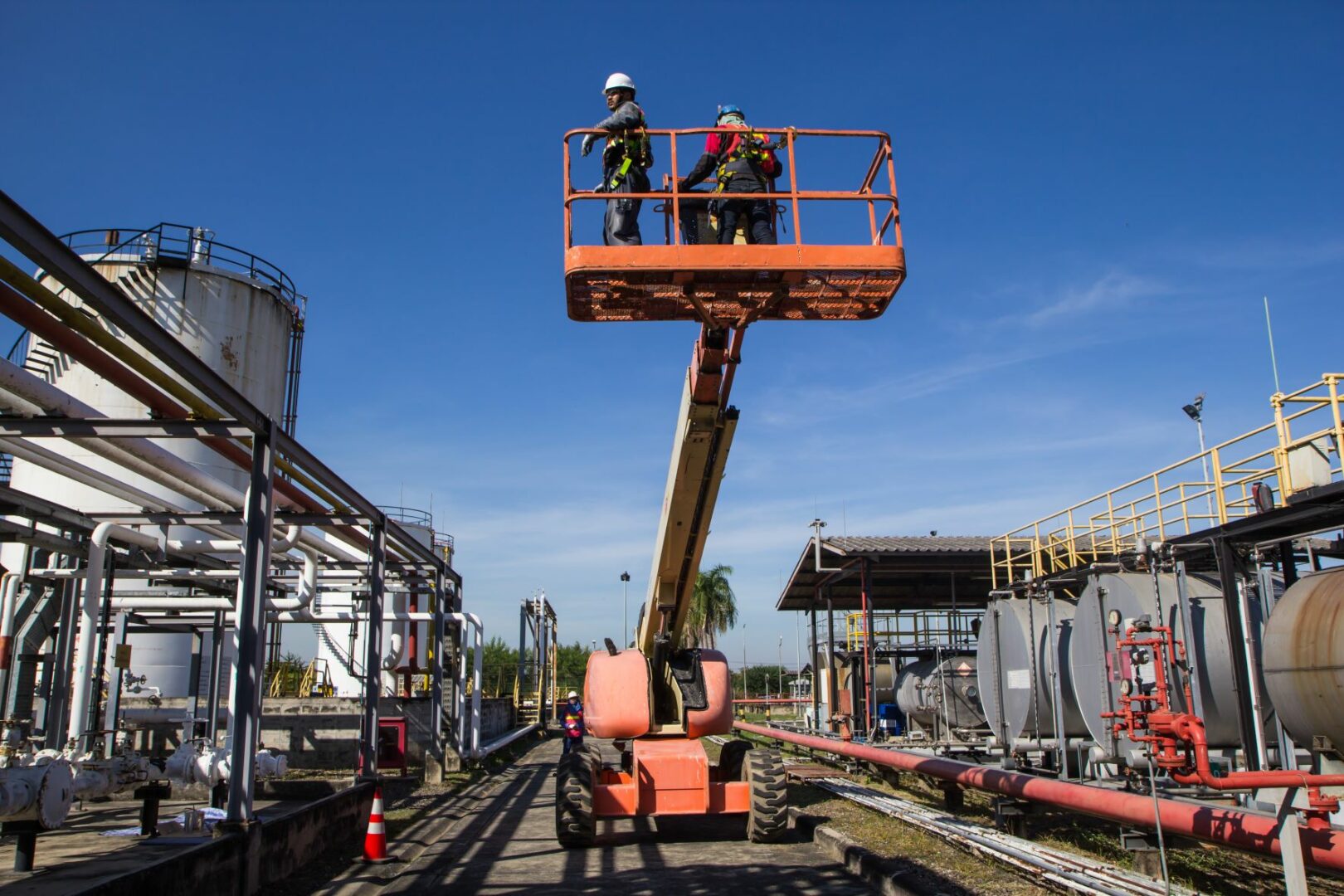Aerial Lifts can be very useful in the workplace, but they can also be very dangerous. It is important to be fully aware of the hazards prior to using them. Aerial lifts have replaced ladders and scaffolding on a lot of job sites due to their mobility and flexibility.
Aerial lifts are powered, mobile platforms that are used for elevating workers to different heights. Depending on the function of the Aerial Lift, the platform may move vertically only or rotate around a primarily vertical axis. Many workers are injured or killed each year on aerial lifts.
OSHA describes an aerial lift as any vehicle-mounted device used to elevate personnel. Previously associated with aerial lifts, the Scissor Lift is now considered a mobile scaffold by OSHA and falls under the corresponding scaffold regulations.
The American National Standards Institute (ANSI) recently updated their standards and now refers to Aerial Work Platforms as Mobile Elevated Work Platforms (MEWP). The ANSI definition of MEWP includes Aerial Lifts and Scissor Lifts.
OSHA aerial lift standards and regulations can be found in General Industry CFR 1910.67-Vehicle Mounted Elevating and Rotating Work Platforms and 1910.333(c)(3)-Work Near Overhead Lines. For Construction 1926.20(b)-Accident Prevention Responsibilities, 1926.21-Safety Training and Education, and 1926.453-Aerial Lifts.
In 2020 most accidents involving an aerial lift were falls, therefore fall protection is a critical aspect of safe aerial lift operation. And while workers may think that since the bucket is equipped with guardrails, they don’t need to use a personal fall arrest system, but this could not be further from the truth. Workers may be protected by the rails or guards while in the bucket, but not when the entire lift tips. Railing provides no protection when the lift tips over.
The second most common incident involving aerial lifts is electrocution. Electrocution in aerial lifts occurs when the lift gets too close or makes contact with overhead power lines.
Working with an Aerial Lift safely means employers should conduct a job hazard analysis to assess the work site and identify all possible hazards. When working with aerial lifts, effective controls should be in place that address fall protection, stabilization, and positioning. Only trained and authorized workers should be using aerial lifts. Aerial Lifts should be maintained, and inspections should be completed prior to use. Follow manufacturers instructions and implement safe work practices.
PPE including personal fall arrest systems should be provided to workers using an aerial lift.
When maintaining aerial lifts:
- Equipment should to be tested annually for dielectric insulating ability
- Insulating parts should be cleaned with non-filming agents
- Equipment should be inspected and operationally checked prior to use as recommended by manufacturer
Aerial lifts should also be inspected weekly, monthly, and annually.
Prior to engaging in work with aerial lifts, rescue plans need to be in place. There are three types of rescue plans:
- Self-Rescue (by person involved)
- Assisted Rescue (by others in the work area); and
- Technical Rescue (by emergency services).
Rescue Plans must be implemented prior to start of work, must be in written format, must be made part of the training manual and must be carried out by appropriately trained personnel.
The Rescue Plan should include the following scenarios:
- After a fall
- When the platform gets entangled
- When a machine breaks down
On a side note, ANSI Standards require the practice and demonstration of aerial lift rescue at least once a year.
Training requirements include:
Occupant Training:
- Occupants must use personal fall protection
- Must be trained in safe use of MEWP accessories, site-specific work procedures, and hazards related to the task
Qualified Operator Training:
- Operators must be properly trained, authorized and familiarized with the MEWP before use. The requirements of each of these three steps are listed in the new standards
I hope this article was informative and helpful. If you need help developing an aerial lift safety program for your company, give us a call. We just released our fully comprehensive in-house Aerial Lift Safety Training Kit. JJ Safety can also help you develop your written safety policy and if you prefer online safety training, check out our LMS Online Training platform.
Call 866-627-3850 or email us at sales@jjsafetyllc.com to learn more.
